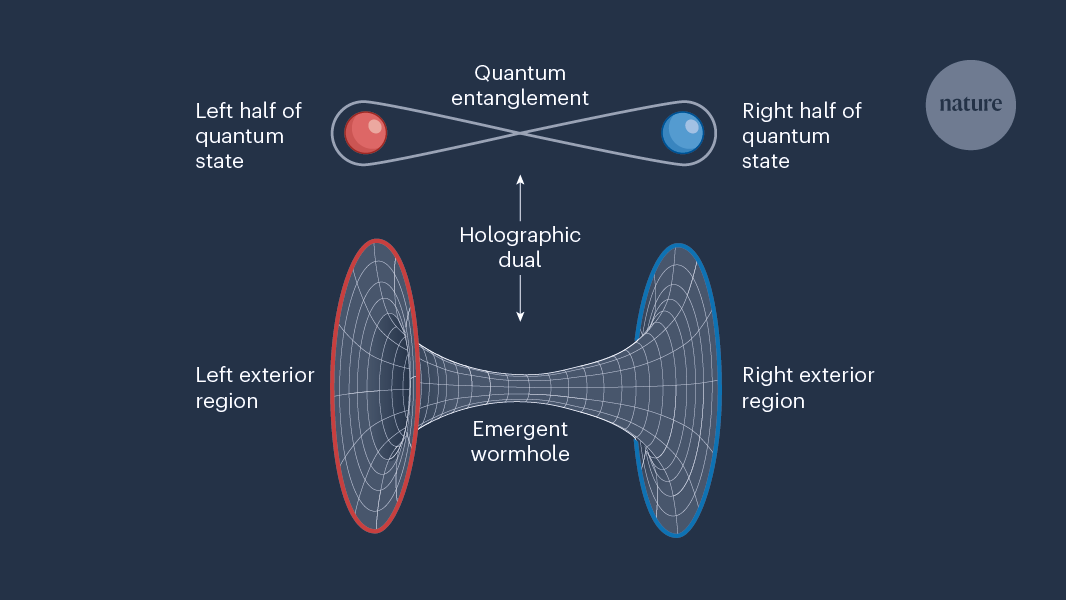Quantum Computers Simulate Wormholes: Unlocking the Mysteries of Quantum Gravity

In a groundbreaking experiment, physicists recently used Google's Sycamore quantum processor to simulate a traversable wormhole, taking a bold step toward exploring quantum gravity and the holographic principle. This principle, rooted in theoretical physics, suggests that our universe's complex space-time structure might be encoded within quantum information. The project, led by Maria Spiropulu from Caltech, created an experimental platform that could connect fundamental theories of the universe: quantum mechanics and general relativity.
How the Experiment Unfolded
The experiment used a modified Sachdev–Ye–Kitaev (SYK) model, a mathematical framework with a strong holographic duality—meaning it can reflect both quantum and gravitational properties. By structuring qubits in a way that simulated quantum interactions and information flow, researchers created a system that exhibited qualities akin to a wormhole. Through this setup, they observed entanglement and even managed to teleport a quantum state across the simulated wormhole. The successful transmission of information within the quantum computer mirrored theoretical predictions of information moving through a wormhole in space-time.
Testing the Boundaries of Wormhole Dynamics
While this work is groundbreaking, it has prompted significant debate within the scientific community. The simplified nature of the SYK model means it may not fully capture the behavior of real gravitational systems, like those involving black holes or cosmic-scale wormholes. A follow-up analysis in early 2023 raised questions about whether the experiment was sufficiently complex to validate the findings. Critics argue that while the experiment may resemble wormhole dynamics, it lacks some essential components of true gravitational systems.
This experiment on Google’s Sycamore quantum computer also taps into a broader scientific curiosity about the potential of quantum simulations to unravel the mysteries of our universe. If quantum computers can model the complex interplay between quantum information and gravitational phenomena, they may provide tools for visualizing space-time, black holes, and even the origins of the universe in ways that traditional computers cannot.
The Road Ahead: Challenges and Opportunities
Simulating wormholes with quantum computers is still in its infancy, and the experiment has highlighted how limited current models are in capturing real-world gravitational dynamics. Nevertheless, this experiment is an early indicator of what could be possible as quantum technology advances. With larger and more sophisticated quantum processors, researchers will be able to refine these models, possibly allowing us to simulate higher-dimensional wormholes and more accurately capture gravitational effects.
The implications are profound: as quantum processors evolve, they could enable us to test theories of quantum gravity that have long been confined to abstract mathematical spaces. From teleportation and entanglement to the nature of space-time itself, quantum computers could offer a laboratory to test the most challenging theories of modern physics.
In the quest to reconcile quantum mechanics with general relativity, this experiment is a promising step forward. While there’s a long way to go, advances in quantum technology are opening a new frontier in our understanding of the universe, pushing the boundaries of how we conceptualize reality and the laws that govern it. The journey to simulate a complete, traversable wormhole may be challenging, but the groundwork is now laid for a future where quantum computers can offer insights into the very fabric of space-time.
As technology develops, quantum processors might hold the key to answering age-old questions about the structure of our universe and the relationship between quantum information and gravitational forces.
Brown, Adam R., and Leonard Susskind. "A holographic wormhole in a quantum computer." Mol. Cell 75 (2019): 372-381.
Brown, Adam R., and Leonard Susskind. "A holographic wormhole traversed in a quantum computer." (2022): 41-42.